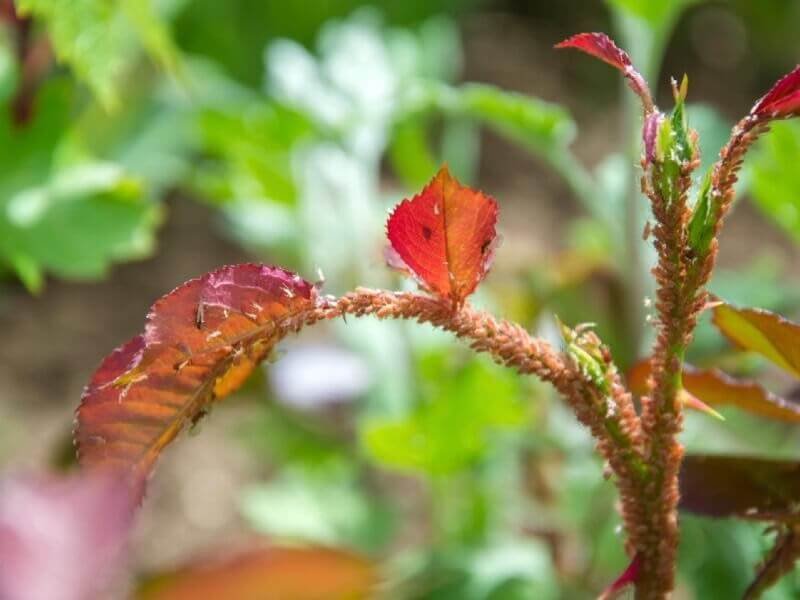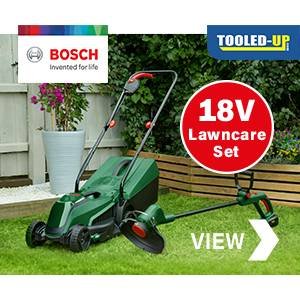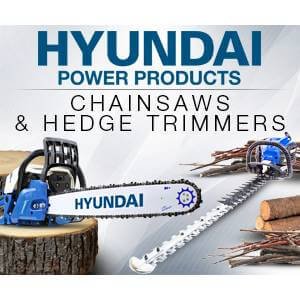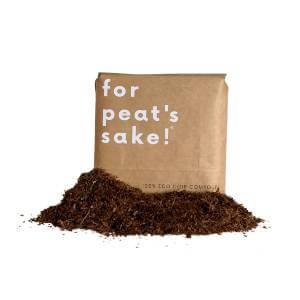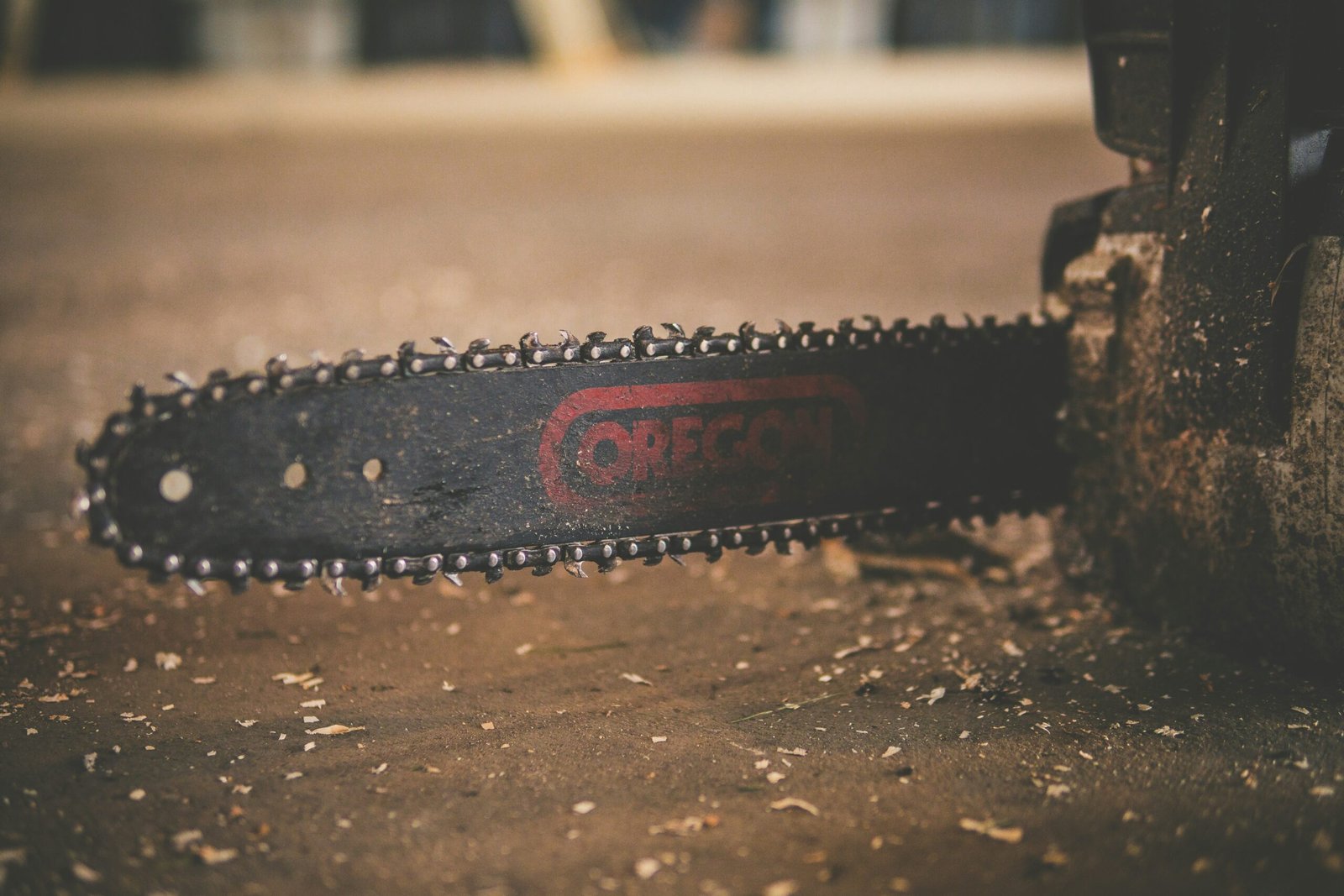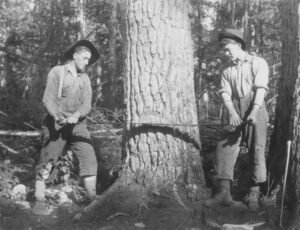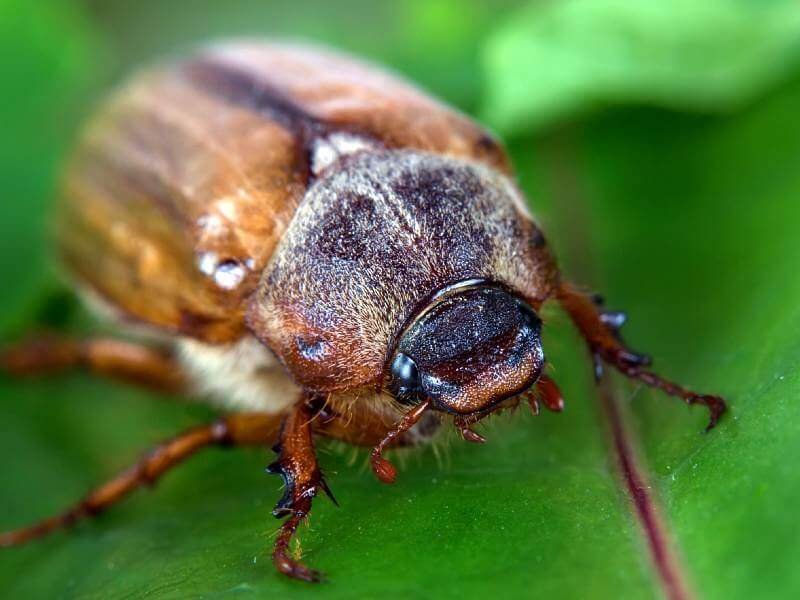
Cockchafer (May Bug) and Rose Chafer
How to spot if you have Cockchafers
The rose chafer is a deadly bug to your red roses as their main diet includes flower blossom. You will need to look out for these around late May (early spring) and even more so if the rose chafer has been a problem before. It’s good to note that these are also underground pests, you may spot if you have chafer problems by the following things;
- Buzzing noise may be the first sign that you notice you have this bug or you may also see them bumping against light fittings or window panes.
- As the adults will feed on the leaves and blossoms you may also notice irregularly shaped holes over these.
- Although barely seen the larvae also called grubs hatched by rose chafer adults would live in the soil.
- They are 3-4 inches long and yellow/white with brown heads they are usually seen in a ‘c’ shape pose.
- These are the underground pests.
- The cockchafer beetle’s size is up to 30mm and is distinctive with their fan-shaped antennae they have a black thorax rusty brown wing cases and brown legs.
- The rose chafer is 20mm long which is a metallic green colour and a distinct ‘v’ shape mark on its back.
- They will typically be found in a sunny spot and are attracted to sandy soil where they can lay their eggs.
How to get rid of Cockchafer (May Bug) and Rose Chafer?
As the damage left by the chafer bug can be pretty devastating, you will need to get on top of these as soon as possible. Therefore ensure you are checking these as often as you can and following a few of the tips below.
- If there is a small infestation you will be able to handpick these off (with gloves of course).
- After they have been picked place in a bucket of soapy water.
- Pesticides may need to be used if there is a large infestation and other methods don’t work.
- This will need to be sprayed every two days as it will need to cover those that will ‘fly-in’ problems.
- When choosing one of these be sure to look for the following ingredients Imidacloprid Permethrin Cyfluthrin Bifenthrin Carbaryl.
- During the growing season you may also find using a physical barrier is also an option although some could say this is slightly unattractive.
- Good options are a cheesecloth or floating row cover this is a safe non-toxic way to protect your plants from unwanted bugs.
- You can take these down when the chafers are finished feeding – this will be after June.
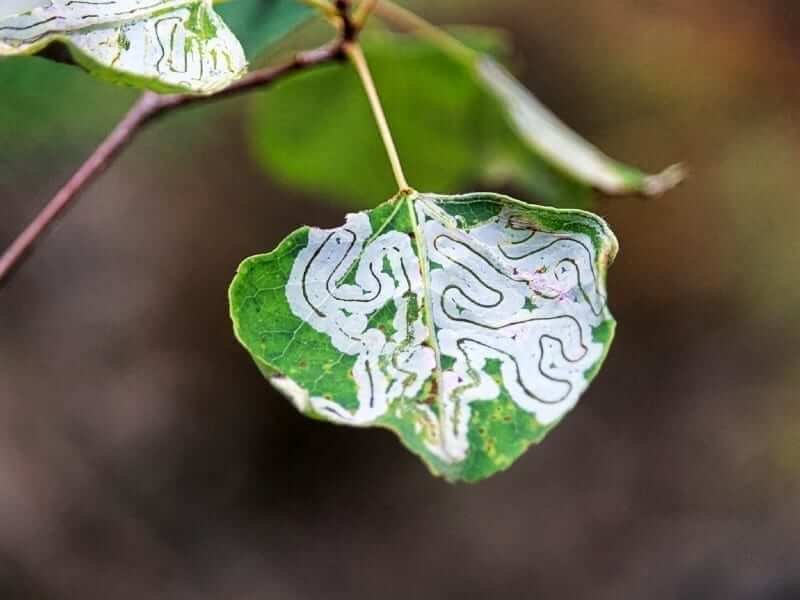
Agromyzidae (Leaf-miner)
How to spot if you have leaf miners
The adult leaf miners are typically not easy to spot, as they are small and look very similar to the hunched-back house flies; however, below are some easier signs to look out for;
- You will most likely notice a maze of beige or silvery wiggly trails on the leaves’ upper surface which can also appear as black spots or blotches; this is the damage caused by the larvae.
- The adults themselves cause no damage to the plant themselves these look much like flies and a black/grey colour with yellow stripes and transparent wings and as mentioned above they are between 1-6.5mm in length.
- The larvae are thick white/yellow type maggots and on a heavily infested plant it’s not uncommon to see up to six maggots on one leaf.
How to get rid of Leaf-miners?
So if you notice you have these, we understand if you want to get rid of them as soon as possible. Here are a few tricks for you:
- Pinch off the infected leaves as soon you notice the wiggly patterns left on them; you should remove and dispose of or burn these immediately.
- If feasible squash the tunnels on the leaves to kill the burrowing larvae.
- One of the most common methods is to use general pesticide on the infected plant although it not the most effective.
- You can find specific pesticides for killing leaf miners – which will be absorbed into the leaves; these can be used at any time of the year.
- One reason why pesticides may not work well is not spraying them at the right time. If you spray too early or too late it will not reach the lead miner larvae and the cycle will not stop.
- A good tip is to place a few infected leaves in a ziplock bag ensuring you check this daily.
- The larva will then become adults and you will see tiny black flies flying the bag.
- You will then need to start spraying the plants daily for a week ensuring that you throw away the bag of infested leaves.
- Neem oil is a great way to be rid of leafminers; this will disrupt the life cycle of leaf miners.
- Some bugs can be beneficial such as the Diglyphus isaea (a tiny parasitic wasp) this bug kills leaf miners and their eggs.
- You can purchase these from any reputable nurseries. Test on a sample leaf first.
- and when releasing these wasps do this morning or evening. Each 100ml bottle will treat roughly 500 adults depending on how bad your infestation is.
- However be mindful that spraying pesticides may kill off beneficial bugs you naturally have in your garden.
Rose Slugworm
Although it’s not the adult sawflies that cause the problems, it’s a good idea to look out for these during June-October when they are most active; typically, if you have the adults in your garden, you will have a slug worm infestation.
Here are a few things to spot if you have them in your garden:
- Adult rose slug worms have black bodies and are roughly 4-5mm long. They have dusky transparent wings; the sawflies themselves do not cause any distortion to the foliage.
- The larvae of sawflies look very similar to caterpillars; they are a pale yellow-green colour with light brown heads; weirdly their bodies are translucent.
- Their gut contents are typically the green colour inside the body.
- You will most typically find these pests on the underside of the leaves. However these pests will feed on the exposed leaf surface if the plant is in a shaded area.
- You may also notice the surface of the leaves grazed; these areas will be dried up and either become a white or pale brown or currently turning brown until only the epidermis remains; this type of damage is known as window paining.
- It’s good to note that they do not make holes in the leaves so if you notice holes are among the symptoms affecting your plants it is most likely not rose slugworm.
How to get rid of Rose slugworm?
Now, we know a light infestation won’t cause significant damage to your roses as a whole, but leaving them can cause the leaves to become distorted. So it’s always best to get on top of these ASAP before anything detrimental happens! Here are our tricks;
- If it is just a few leaves infected/light infestation this can be tolerated unless your roses are for decoration purposes. In which case we would suggest handpicking these off and disposing of them.
- You can also encourage natural predators into your gardens such as birds or ground beetles.
- If you cannot control numbers using non-pesticides methods you may want to use organic contact insecticides.
- We would suggest spraying at dusk to achieve the best results and will require several applications. You will want to look for natural pyrethrins.
- Bug Clear Gun specifically for fruit and veg or Larvae Killer are great options on the market.
Red Spider Mite
How to spot if you have Red Spider Mite
The red spider, also known as the fire ant, attacks typically during hot, dry weather. Left untreated, it can lead to leaf loss and, in worse case scenarios, the death of your rose plant. Red spider mites are active and a problem from March-October; however, these can be a problem all year round in glasshouses.
- Bronzed patches on the upper surface of leaves/foliage the leaves may also be scorched.
- When a large infestation has attacked your roses you may notice some webbing on the plants – this webbing provides protection from predators.
- Spider mites are small wingless insects with eight legs and despite their name they are more of a yellowish-dark colour with two dark patches.
- They can be a reddish/yellow colour in the autumn and also known to be entirely dark!
- You will find these tiny mites on the underside of the leaf which can be seen with a magnifying glass.
How to get rid of Red Spider mite?
It’s known that controlling the red spider mite can be challenging since insecticides kill off their natural predators. It’s also good to note that chemical controls should not be applied to your rose bushes during the heat of the day.
The best time for application is a cool early morning, and only once they have well-watered. You can read more about chemical controls and when to apply here.
- Specifically in glasshouses you will be more susceptible to severe infestation if your glasshouse is overcrowded due to the high temperatures.
- We would suggest regular syringing and spraying your plants with water. This is more of a preventative than a way to control.
- Likewise if there is a severely infested plant in glasshouses remove this in the later summer ensuring you remove any debris old canes before spring.
- Weeds can act as a host for the mites.
- Phytoseiulus persimilis is a biological control – a predator mite used to kill spider mites and used as a preference to chemical controls.
- A suitable insecticide is Bug Clear Ultra or provonto (always read the label when applying).
Caterpillars
How to spot if you have caterpillars
Caterpillars are in the larva stage of their life cycle before they turn into baby moths or butterflies.
To progress through these stages of their lives, they need to be fed, and due to plants containing all the essential and vital vitamins they need to grow, they will be munch away from your plants if they get a chance.
Adults are typically active from April through to October. There are over 2,000 species of caterpillars in the UK.
- The main sign to look out for irregularly shaped holes in the leaves may be caterpillars feeding.
- They will start here and eventually move their way round to the pedals.
- They will most likely be hiding on the underside of the leaf where they will also lay their eggs.
How to get rid of Caterpillars?
You’ll be pleased to know that caterpillars will not kill your roses, but they can cause some severe damage by weakening your plant’s ability to grow new leaves, which is needed to survive.
Ultimately, this will make them more susceptible to diseases or infestations. Combined with this, they can leave unsightly damage they leave behind.
Early detection is always best; check the underside and the lower part of the leaves of your rose.
The best option is to pick these off by hand; luckily, they are harmless and will not sting or bite, although we would suggest wearing gloves.
- Neem oil is another great option to deter these.
- Diced garlic and cloves have been known to deter caterpillars; place these around your garden.
- Equally using garlic spray is another option. For this mix two cups of water with a couple of spoonfuls of garlic and spray around your garden.
- If chemical control is needed (a severe infestation) to be used we would suggest using Bug juice Bug spray which repels all insects.
- Spinosad Organic Spray controls caterpillars without harming any other bugs.
Rose LeafHopper (Edwardsiana rosae)
How to spot if you have Leaf- Hopper
In greenhouses, the leafhopper can be active all year round. However, they are most active April-September; and attracted by the warm weather.
Adults lay their eggs on the leaves and feed on the plant’s sap; they also leave behind a honeydew.
- Pale mottled patches on the leaves and leaves may wither.
- Small yellowish insects on their bare white skins may be found on the damaged leaves’ underside; you may notice white cast skins left by immature nymphs.
- If you have a heavy/serve infestation you may notice that the spots have joined together; this looks similar to mineral deficiency – of the leaves having a chlorotic appearance.
- Adult leafhoppers are around 3mm in length and pale green-yellow colour with grey markings.
- They are known to jump long distances and when disturbed will fly short distances.
- The nymphs are harder to spot; they are creamy-white wingless and less active so they can be easier to spot.
How to get rid of Rose leafhoppers
Often, leafhoppers can be tolerated as they do not cause any problems to your plants’ growth or vigour.
However, we recommend a preventative measure to regularly check your roses to get on top of an attack before they get out of control.
Once you have cleared the infestation, affected leaves will remain the same colour as when damaged, but new growths will develop normally.
- Encourage natural predators into your garden.
- Ladybirds birds ground beetles and wasps are all examples.
- This will minimise the harm to non-target pests if this does not work we would suggest conducting chemical controls.
- Spray your plants with a strong spray of water from a hose this will help knock the nymph of the tree.
- Using reflective mulch will repel adult leafhoppers from your plants.
- This should be applied at planting or transporting for the best results.
- Be sure to pick and remove any dead plant material from your garden particularly after the growing season the dead plant material is a hiding spot for the leafhopper to lay their eggs.
- Insecticidal soaps are a great option in controlling nymphs (and other small bugs) not only this but they are also great at removing leaf fungus.
- If you want to use insecticides these should be used early on before the nymph turns into adults.
- This can be hard as you typically do not know you have leafhoppers until there is severe damage.
- PyGanic however is an excellent product to use.
Leaf-cutter Bee
How to spot if you have leaf-cutter bee
Belonging to the Megachilidae family, there are more than seven leaf-cutter bee species; they are most active during late spring to late summer and truly are fascinating.
These are solitary bees and are harmless, but it’s always good to be able to spot them in your garden.
- You may notice regular shaped holes at the sides of the leaves this is where the female will use her jaws to cut a section of the leaf out to take back to construct their nest.
- Appearance-wise they are dark brown bees covered in lighter brown or orange hairs.
- With a wingspan of 8-14mm.
- They will most likely nest in a naturally occurring tunnel hollow plant stem holes in walls fence posts and other similar cavities.
- Or they are known to make a tunnel themselves in rotten wood or dry soil in plant pots.
How to get rid of leaf-cutter bees?
Control methods should not be taken; although the female may cut-leaf foliage off plants, this will not affect your plant’s vigour. They are fascinating pollinators and should be treated as a valuable part of our gardens.
An excellent alternative to make your garden more bee-friendly is to buy or make a “bee hotel”, and in return, they are great at pollinating your fruit and veg. All bees are so important to our environment and us.
Let's go Shopping...
Products Coming Soon!

